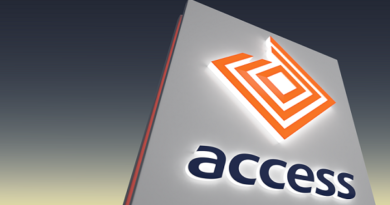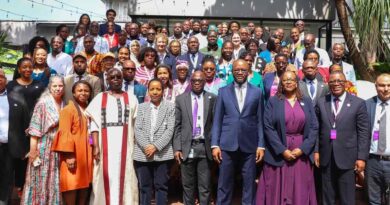U.S.A. – EU PARTNERSHIP ON LOBITO CORRIDOR BOOSTS REGIONAL DEVELOPMENT, SAYS MINISTER TAYALI
In a significant stride towards regional development, the Ministry of Transport and Logistics in Zambia welcomed the recent announcement of a partnership between the United States of America and the European Union to support the realization of the Lobito Corridor. Hon. Museba Frank Tayali, MP, the Minister of Transport and Logistics, expressed his enthusiasm for this collaborative effort, which aims to bolster the transport sector in the region.
The partnership was unveiled through a Joint Statement by the United States and the European Union, focusing on their commitment to aid Angola, Zambia, and the Democratic Republic of Congo in the development of the Lobito Corridor. This milestone announcement comes just four months after U.S. President Joe Biden’s declaration during the G7 Summit that Zambia, along with other Sub-Saharan countries, would benefit from a substantial US$30 billion allocated by the American Government for infrastructure development.
The United States has pledged its support for the Lobito Corridor’s development, initiating investment in a rail expansion project that could potentially serve as the primary open-access transportation link connecting the Democratic Republic of Congo and Zambia to global markets via Angola.
During the recent G20 Summit, additional commitments to advance the Lobito Corridor’s development and the launch of a Greenfield Rail Line Feasibility Study were announced, greatly pleasing Hon. Tayali.
The Joint Statement issued during the G20 event emphasized the collaboration between the United States, the European Union, Angola, Zambia, and the Democratic Republic of Congo in developing the Lobito Corridor, aiming to enhance trade connections between southern DRC, northwestern Zambia, and global trade markets through the Port of Lobito in Angola.
To expedite this endeavor, the European Union and the United States will jointly support the Corridor’s development, including launching feasibility studies for a new greenfield rail line expansion between Zambia and Angola. This marks a substantial evolution of the Partnership for Global Infrastructure and Investment (PGII) approach, which could potentially serve as a blueprint for similar strategic corridors worldwide.
The U.S.-EU partnership intends to upgrade vital infrastructure across Sub-Saharan Africa, realizing the region’s vast potential. Their collaborative efforts aim to generate economic benefits for Angola, the Democratic Republic of the Congo, and Zambia, fostering job creation, reducing the carbon footprint, and bolstering local economies.
The next immediate step involves the United States and the European Union aiding the governments in launching pre-feasibility studies for the construction of the new Zambia-Lobito railway line, traversing eastern Angola through northern Zambia. This builds upon the initial U.S.-led support to refurbish the railway section from the Lobito port in Angola to the Democratic Republic of Congo.
Upon full operationalization of the transport infrastructure connecting all three nations, the Corridor will unlock export opportunities for Zambia, Angola, and the Democratic Republic of the Congo, facilitating the flow of goods and improving citizen mobility. By significantly reducing transport times, the new railway will lower logistics costs and reduce the carbon footprint associated with exporting metals, agricultural products, and other commodities.
The United States and the European Union intend to explore cooperation in three specific areas: transport infrastructure investments, measures to facilitate trade and economic development, and support for related sectors to foster inclusive and sustainable economic growth and capital investment in Angola, Zambia, and the Democratic Republic of Congo in the long term.
Hon. Museba Frank Tayali, MP, expressed his elation at the U.S.-EU partnership’s alignment with the New Dawn Administration’s vision of positioning Zambia as a regional transport hub.



